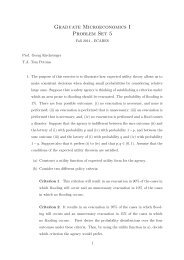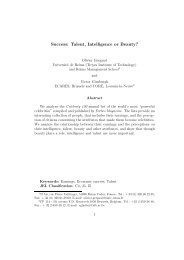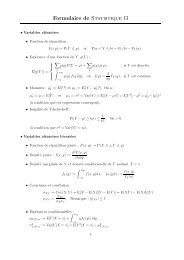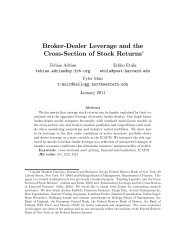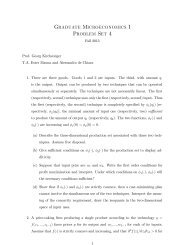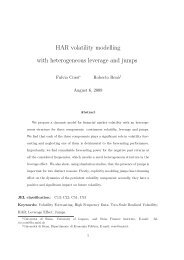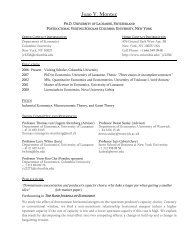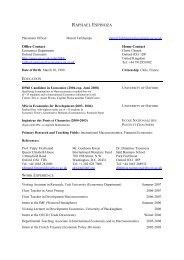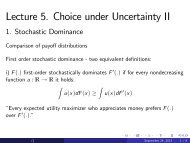Switching Costs in Two-sided Markets - Ecares
Switching Costs in Two-sided Markets - Ecares
Switching Costs in Two-sided Markets - Ecares
- No tags were found...
You also want an ePaper? Increase the reach of your titles
YUMPU automatically turns print PDFs into web optimized ePapers that Google loves.
3.4 <strong>Switch<strong>in</strong>g</strong> <strong>Costs</strong>, One-<strong>sided</strong> <strong>Markets</strong> and RationalitySuppose that all consumers and the two platforms are rational such that δ i , δ F > 0 andα i = 0. e i = 0 s<strong>in</strong>ce there is no two-<strong>sided</strong>ness. For simplicity, assume that consumersdraw new preferences <strong>in</strong> each period (µ i = 0). Equation (3) can be simplified top i 0,1 = 1 + δ i s i + 4 3 δ is 2 i − 2 3 δ F s i .Differentiat<strong>in</strong>g p i 0,1 with respect to s i, we obta<strong>in</strong>Lemma 1. In the two-period s<strong>in</strong>gle-hom<strong>in</strong>g duopoly model, where network externality isabsent, all consumers are rational, and their preferences are <strong>in</strong>dependent over time,i. If consumers are relatively less patient than the platforms, then the relationshipbetween first-period equilibrium prices and switch<strong>in</strong>g costs is U-shaped.ii. If consumers are relatively more patient than the platforms, then first-period equilibriumprices always <strong>in</strong>crease <strong>in</strong> switch<strong>in</strong>g costs.See Appendix B for the proof.3.5 <strong>Switch<strong>in</strong>g</strong> <strong>Costs</strong>, <strong>Two</strong>-<strong>sided</strong> <strong>Markets</strong> and RationalityThe prelim<strong>in</strong>aries are the same as the previous case, δ i , δ F , s i > 0 and α i , µ i = 0, exceptthat the market is two-<strong>sided</strong> now (e i > 0). In this case, Equation (3) can be rewrittenasp i 2(3 − ∆)0,1 = 1 + δ i s i −∆δ is 2 i − 2δ j∆ (e j + 2e i )s j s i − δ F ζs i − e j .Differentiat<strong>in</strong>g p i 0,1 with respect to s i, we obta<strong>in</strong>Lemma 2. In the two-period two-<strong>sided</strong> s<strong>in</strong>gle-hom<strong>in</strong>g duopoly model, where all consumersare rational, both groups of consumers have switch<strong>in</strong>g costs, each side exerts thesame external benefit on the other side, and their preferences are <strong>in</strong>dependent over time,i. For sufficiently weak externality,• If consumers are relatively less patient than the platforms, then the relationshipbetween first-period equilibrium prices and switch<strong>in</strong>g costs is U-shaped.• If consumers are relatively more patient than the platforms, then first-periodequilibrium prices always <strong>in</strong>crease <strong>in</strong> switch<strong>in</strong>g costs.ii. For sufficiently strong externality,• If consumers are relatively less patient than the platforms, then first-periodequilibrium prices always decrease <strong>in</strong> switch<strong>in</strong>g costs.13



